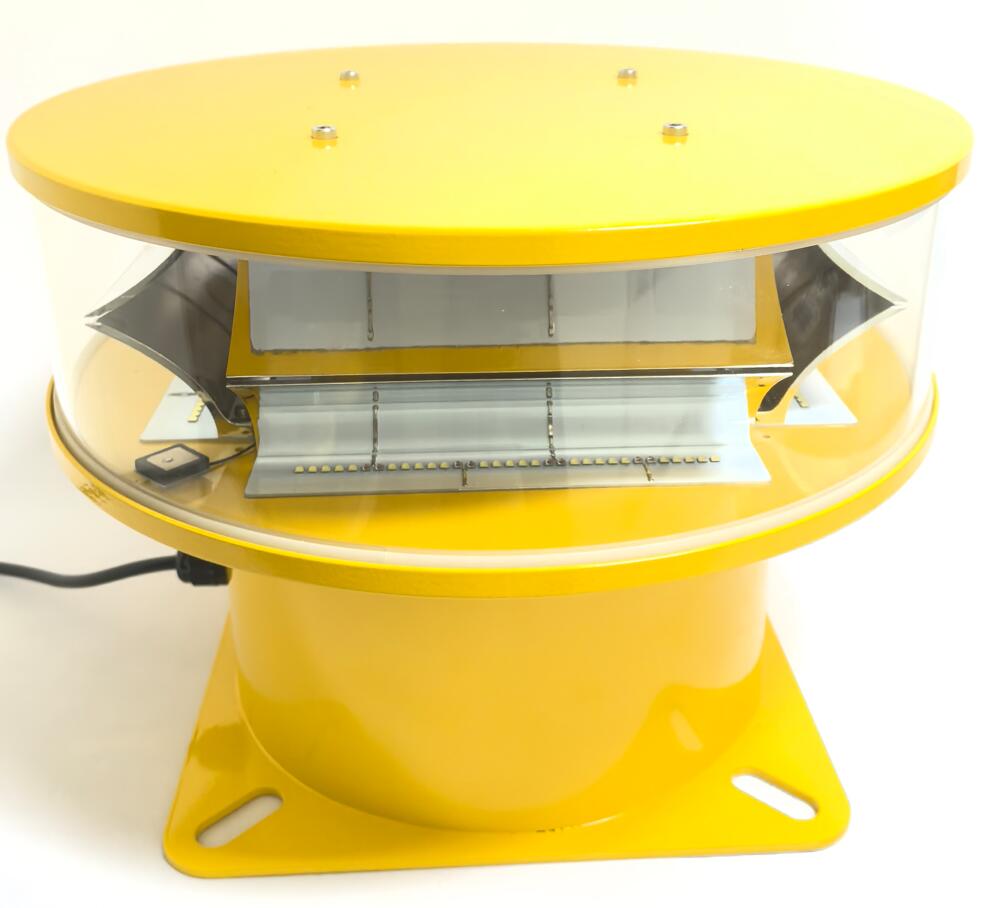High Intensity Aviation Obstruction Lights: Ensuring Safety in the Skies
In the complex world of aviation safety, high intensity aviation obstruction lights serve as critical visual markers for tall structures that could pose risks to aircraft. These powerful lighting systems are designed to be visible from great distances, day and night, ensuring that pilots can easily identify potential hazards. As air traffic increases and structures grow taller, the role of high intensity aviation obstruction lights becomes even more vital. This article explores their technical specifications, applications, regulations, and emerging innovations in the field.
Why High Intensity Aviation Obstruction Lights Are Essential
1. Preventing Mid-Air Collisions
Tall structures like skyscrapers, wind turbines, and communication towers can be hazardous to low-flying aircraft.
High intensity aviation obstruction lights provide unmistakable visual warnings, reducing collision risks.
2. Compliance with Aviation Regulations
International and national aviation authorities mandate their use on structures exceeding certain heights.

They ensure uniformity in obstruction marking worldwide.
3. Enhanced Visibility in All Conditions
Designed to be visible in daylight, twilight, and nighttime.
Effective even in adverse weather conditions like fog, rain, or snow.
| High Intensity Aviation Obstruction Lights |
Types of High Intensity Aviation Obstruction Lights
1. Type A (High Intensity White Strobe Lights)
Visibility Range: Up to 20 nautical miles (37 km).
Flash Rate: 40 flashes per minute.
Applications: Very tall structures (over 500 feet / 152 meters).
2. Type B (Medium Intensity White Strobe Lights)
Visibility Range: Up to 10 nautical miles (18.5 km).
| High Intensity Aviation Obstruction Light |
Flash Rate: 30-60 flashes per minute.
Applications: Structures between 200-500 feet (61-152 meters).
3. Type C (Dual Lighting Systems)
Combination: Red steady-burning lights with white strobes.
Applications: Structures near airports or in urban areas.
Technical Specifications and Design Features
1. Light Output and Intensity
Daytime Intensity: 20,000 to 200,000 candela.
Nighttime Intensity: Adjustable to avoid glare while maintaining visibility.
2. Durability and Weather Resistance
Housing Materials: Aircraft-grade aluminum or reinforced polycarbonate.
Protection Rating: IP66 or higher for dust and water resistance.
Temperature Range: Operates in -40°C to +70°C conditions.
3. Power and Energy Efficiency
Power Options: AC/DC or solar-powered models available.
LED Technology: Low energy consumption with high brightness.
Regulatory Standards and Compliance
1. International Civil Aviation Organization (ICAO) Annex 14
Defines light intensity, flash patterns, and color requirements.
2. Federal Aviation Administration (FAA) AC 150/5345-43
Specifies photometric performance for U.S. installations.
3. European Aviation Safety Agency (EASA) CS-ADR-DSN
Certification standards for European airspace.
4. Other Regional Guidelines
CAP 168 (UK), CASA (Australia), Transport Canada each have specific requirements.
Applications of High Intensity Aviation Obstruction Lights
1. Skyscrapers and Urban High-Rises
Prevent collisions in densely populated airspace.
2. Wind Turbines and Renewable Energy Farms
Ensure visibility for low-flying aircraft and helicopters.
3. Communication and Broadcast Towers
Critical for rural and mountainous regions.
4. Cranes and Temporary Structures
Used in construction zones near airports.
5. Offshore Platforms and Marine Structures
Warn helicopters servicing oil rigs and wind farms.
Installation and Maintenance Best Practices
1. Proper Placement and Spacing
Mounted at the highest point of the structure.
Spaced for 360-degree visibility.
2. Routine Inspections
Check for lens cleanliness, corrosion, and electrical integrity.
Verify flash synchronization in multi-light installations.
3. Smart Monitoring Systems
Remote diagnostics for real-time performance tracking.
Automated alerts for maintenance needs.
Future Innovations in High Intensity Aviation Obstruction Lighting
1. Adaptive Lighting Systems
Automatically adjust brightness based on ambient light.
2. Integration with Air Traffic Control (ATC) Systems
Synchronized with radar for enhanced situational awareness.
3. Solar-Powered and Hybrid Solutions
Reduce reliance on grid power in remote areas.
4. Drone Detection Compatibility
Enhanced visibility for unmanned aerial vehicles (UAVs).
High intensity aviation obstruction lights are indispensable for modern aviation safety, ensuring that tall structures remain visible to pilots under all conditions. With advancements in LED technology, smart monitoring, and energy efficiency, these systems are becoming more reliable and sustainable.
As urban development and air traffic continue to grow, the demand for high-performance obstruction lighting will only increase. Investing in compliant, high-quality high intensity aviation obstruction lights today ensures safer skies for tomorrow.
